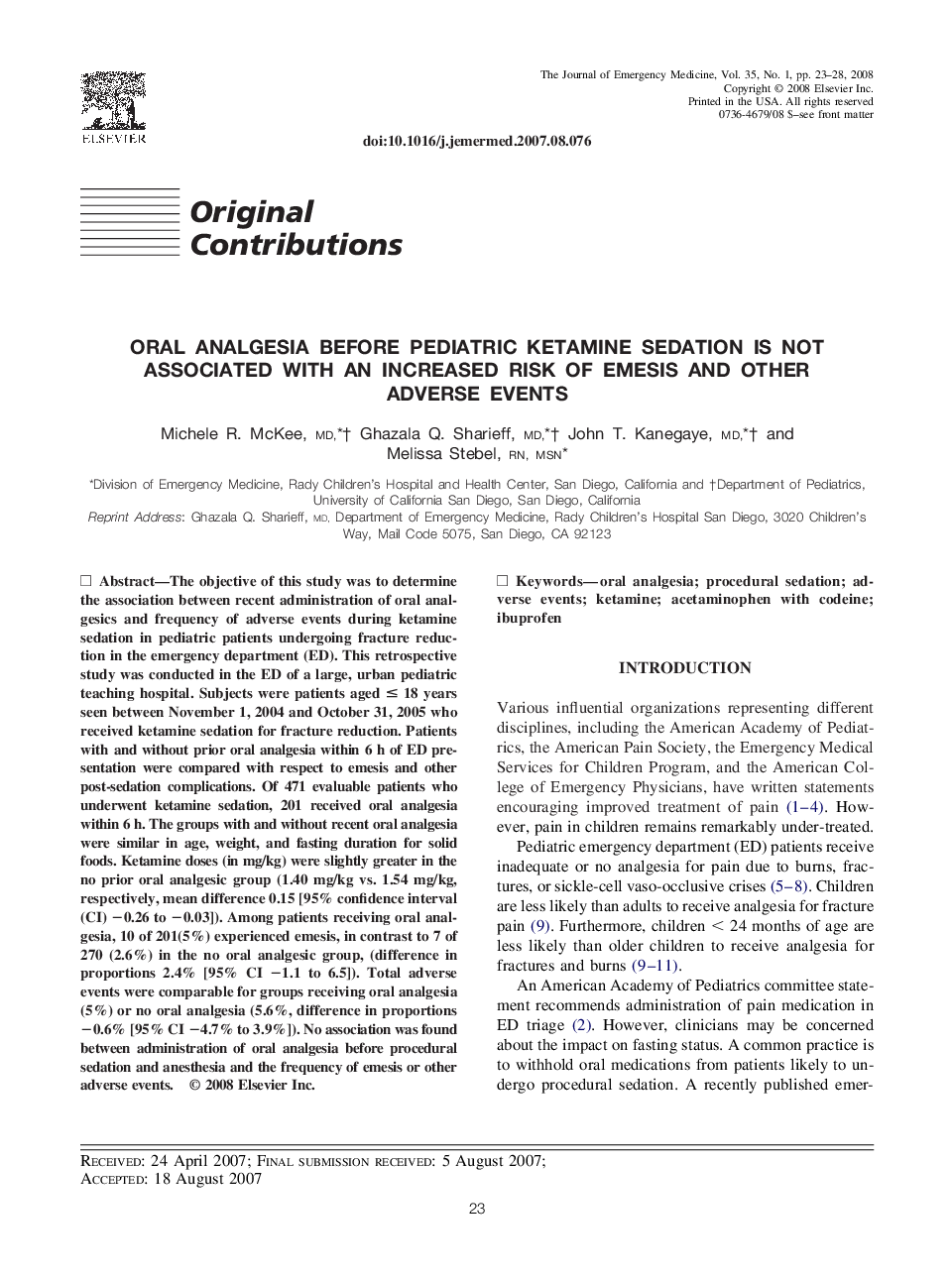| Article ID | Journal | Published Year | Pages | File Type |
|---|---|---|---|---|
| 3249968 | The Journal of Emergency Medicine | 2008 | 6 Pages |
Abstract
The objective of this study was to determine the association between recent administration of oral analgesics and frequency of adverse events during ketamine sedation in pediatric patients undergoing fracture reduction in the emergency department (ED). This retrospective study was conducted in the ED of a large, urban pediatric teaching hospital. Subjects were patients aged ⤠18 years seen between November 1, 2004 and October 31, 2005 who received ketamine sedation for fracture reduction. Patients with and without prior oral analgesia within 6 h of ED presentation were compared with respect to emesis and other post-sedation complications. Of 471 evaluable patients who underwent ketamine sedation, 201 received oral analgesia within 6 h. The groups with and without recent oral analgesia were similar in age, weight, and fasting duration for solid foods. Ketamine doses (in mg/kg) were slightly greater in the no prior oral analgesic group (1.40 mg/kg vs. 1.54 mg/kg, respectively, mean difference 0.15 [95% confidence interval (CI) â0.26 to â0.03]). Among patients receiving oral analgesia, 10 of 201(5%) experienced emesis, in contrast to 7 of 270 (2.6%) in the no oral analgesic group, (difference in proportions 2.4% [95% CI â1.1 to 6.5]). Total adverse events were comparable for groups receiving oral analgesia (5%) or no oral analgesia (5.6%, difference in proportions â0.6% [95% CI â4.7% to 3.9%]). No association was found between administration of oral analgesia before procedural sedation and anesthesia and the frequency of emesis or other adverse events.
Related Topics
Health Sciences
Medicine and Dentistry
Emergency Medicine
Authors
Michele R. MD, Ghazala Q. MD, John T. MD, Melissa RN, MSN,
